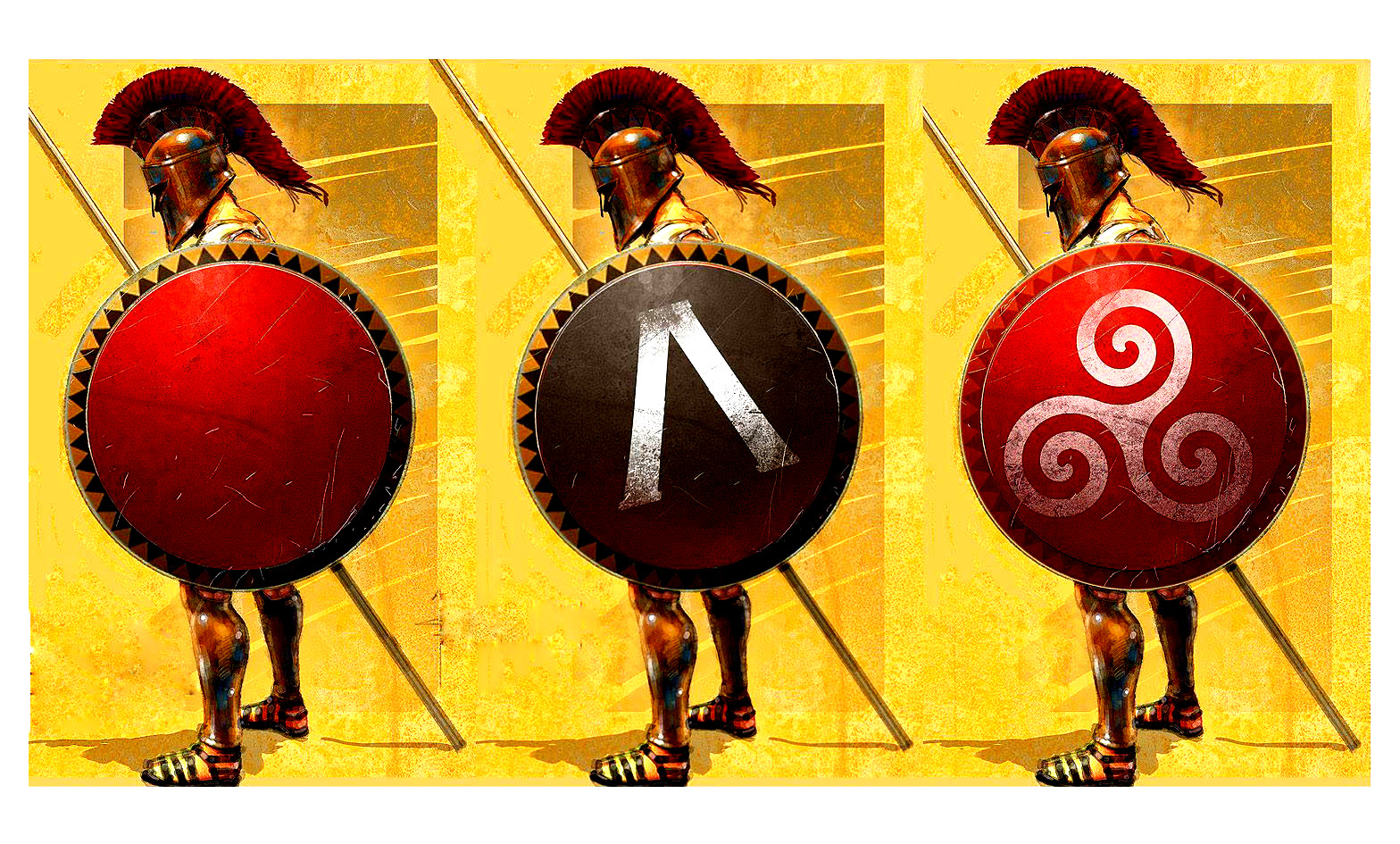

The above stated, back to the actual use of the shield! The wonderous bronze cuirass being a Euboan design from the 8th century BCE, and that most famous helm being of Corinthian design, emerging at roughly the same time as the Argive shield: early 7th century BCE. The classical hoplite that is so well known to us, and most often portrayed - large, rounded bronze shield, bronze cuirass, greaves, and plumed helm - was really the Greek innovation on a Mesopotamian idea. It is a marked improvement over the Boeotian or Thracian - or even pelta that lends its name to the peltastai or skirmishing forces of ancient Greece - shields that would commonly be utilized by early Greek spearmen, and was first seen in use by Dorian tribes in the Peloponnese nearing the end of the Greek Dark Age. is an innovation attributed to the city-state of Argos. It should be noted, as well, that this shield (known as the Argive shield) (the name of which - I am leaning towards Argive - I am also blanking upon, but will correct later on) was an improvement made in the Peloponnese (not by the Spartans, either!)before the dawn of the Greek Golden Age. In doing so, the shield would cover the upper body of the hoplite, as well as the partially exposed spear-arm of the compatriot to their left in the classical hoplite phalanx. which was a Carian innovation stemming from the mid-8th century BCE. The convex shape of the aspis and slight "lip" around the rim allowed the Classical hoplitai to rest the shield upon the pauldron/shoulder while maintaining a grip on the shield utilizing its interior strap (which was innovated at two important intervals, the dates of which I cannot recall at the moment, but will expand upon later).


 0 kommentar(er)
0 kommentar(er)
